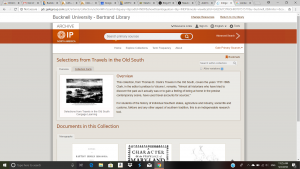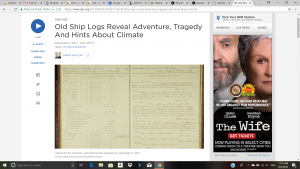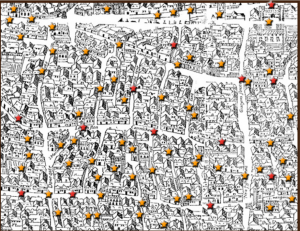Creating a digital artifact from archival documents allows for a much more pleasurable experience for research. Digital artifacts are able to compile vast amounts of information into one place. This allows for much more accessibility, than traveling the world viewing artifacts in each location. Many more people are able to view artifacts online, where they do not have the time or money to view all those artifacts in person. Additionally, many artifacts are in old handwriting styles that not everybody can understand, so digitizing these allows everybody to be able to easily view. Also, many artifacts are old and very fragile, but digitizing these allows anybody to view artifacts without risk of damaging preserved materials. I feel these digital artifacts are sufficient enough that there is basically no need to view the physical original artifacts. When transcribed and put together well, these digital artifacts provide all the information you would acquire from viewing the physical artifact. These articles are often categorized allowing you to more specifically research your interests.Overall, digital artifacts allow for viewers to easily find more information in one place than ever possible before.

One problem I could see occurring from digital artifacts is human error. When texts are transcribed by humans, there is always the possibility of something being transcribed poorly. This would result in the research of an inaccurate representation of an artifact. Another issue is these digital artifacts need to be maintained well also. The digital world is constantly evolving, so these resources need to have people making sure their artifacts are staying up to the standards. This causes more time and money to go into the process. However, if everything is transcribed well, digital artifacts are much more efficient for researchers, though take much effort from authors.
I believe while the world is evolving, so are the research strategies. Researchers are often interacting more with the material on the screen rather than the printed page. This allows for accessibility to more researchers, creating even more information. As research continues to evolve into the digital world, we will continue to have more information provided at the click of a button. This is truly a remarkable evolution, as there has never been so much knowledge in one place than we have today.
Also, digitized texts are able to highlight key pieces of information one might not even notice through printed texts. Long artifacts would be skimmed through by most people. But through design of a digital source, authors are able to highlight pieces of information they find important. For example, the Selfie City (http://selfiecity.net/#) page I explored provides statistics on what they believed to be their most important findings. This clearly shows viewers the key pieces of information they might not pick up on while researching on their own.

The Moravian Lives project contains a map, which shows viewers where the authors found all their information. This is the same experience I had when viewing The Early Map of London (https://mapoflondon.uvic.ca/agas.htm). These authors make sure to provide exactly where their sources come from allowing users to easily verify the authenticity of their work, limiting any possibility of error in one’s research. Additionally, they both start with a distant view, but allow you to zoom in on areas of focus, giving researchers full control over their work.


Tyler George is a political science and history double major at Bucknell University in Lewisburg, Pennsylvania. Tyler formerly attended Lincoln-Sudbury high school, in his hometown, Sudbury, Massachusetts. Tyler plays club hockey at Bucknell, and also participates as an Army ROTC cadet in the Bison Battalion.



